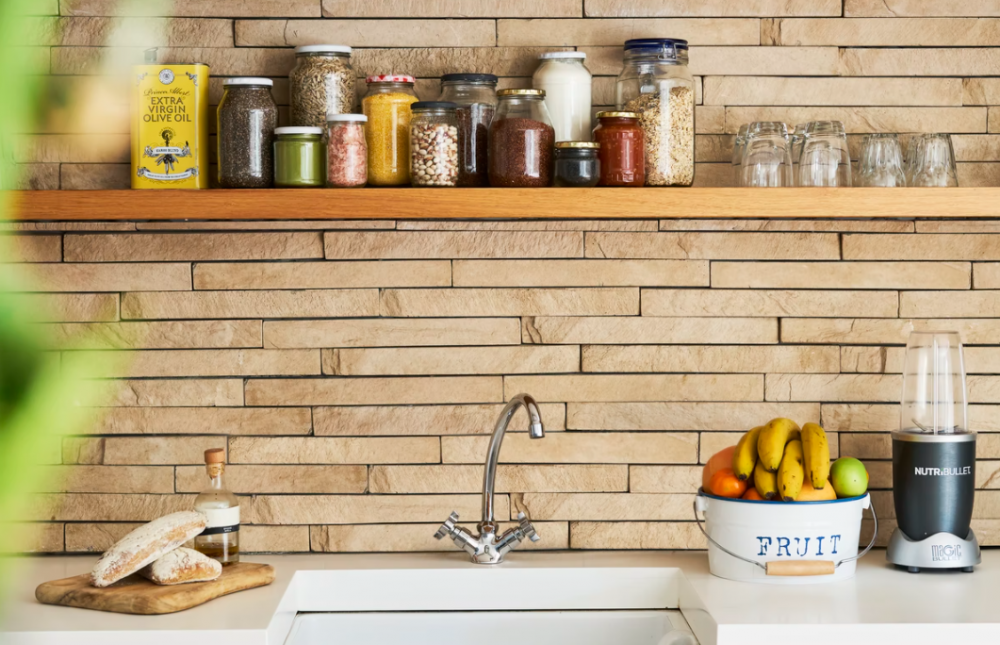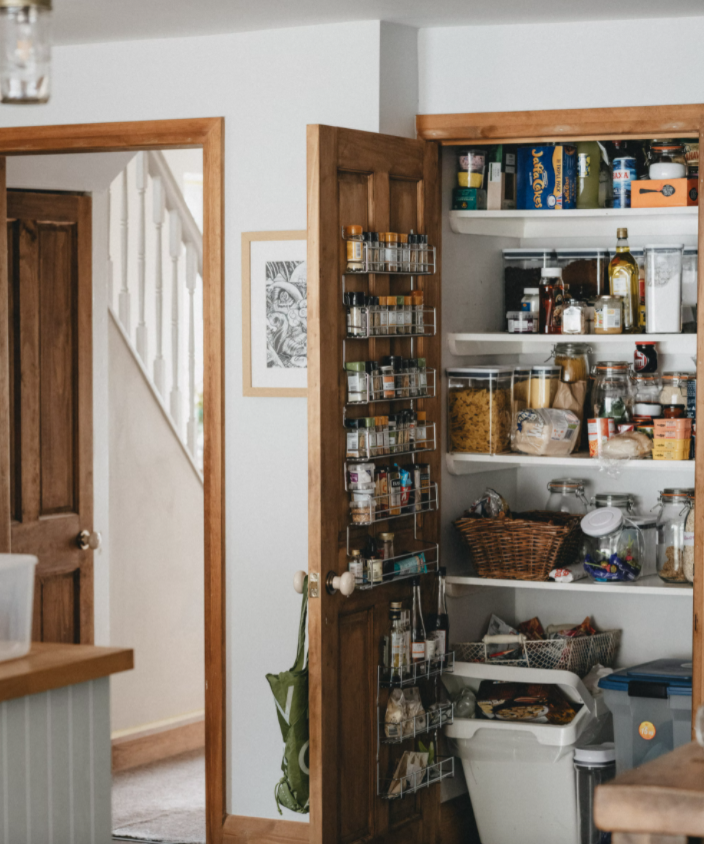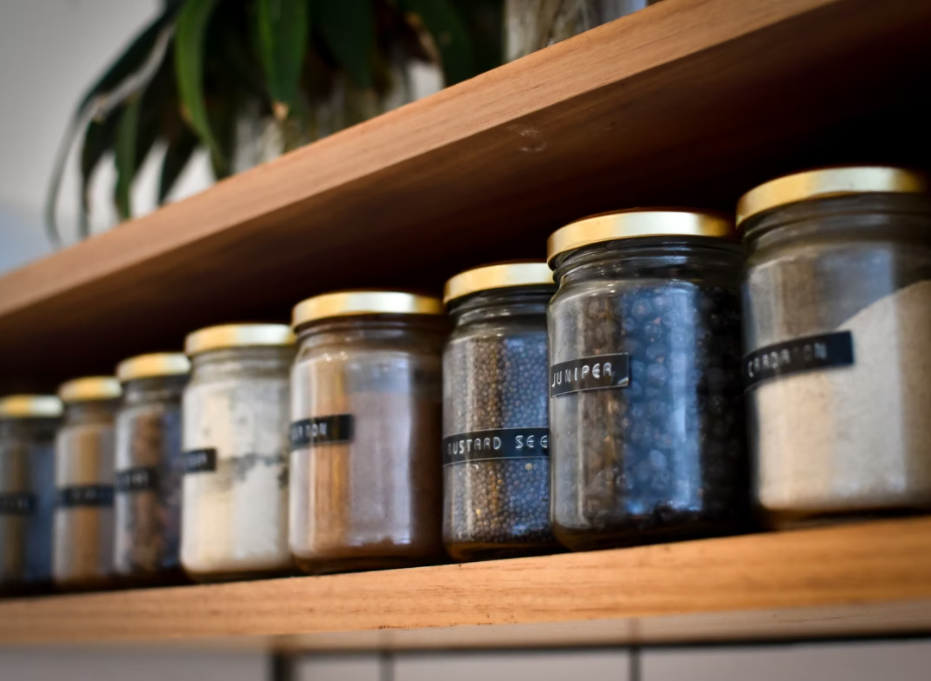Having an organized pantry is essential to the avid baker!
 Photos By: Unsplash
Photos By: Unsplash
It’s important for keeping track of ingredients, finding things quickly, and not letting anything go bad. Being organized makes cleanup easier, so you can save time and avoid the stress of a mouse or cockroach problem. Here are 10 easy tips for a clean and organized pantry!
1. Decant Dried Goods
Find some clear, airtight containers or jars and use them to store things like sugar, flour, pasta, and spices. There are lots of different kinds out there – some are stackable, some are made of glass, and some have labels built into them. Decanting will keep your foods fresh and make it easy for you to keep track of what you have in stock. It will also allow you to buy things in bulk, which will save you money and reduce waste.
2. Use Bins and Baskets
Bins and baskets are great for storing loose items like potatoes, onions, and garlic. You can also use them for snacks, tea, and other individually wrapped items. They’ll be easier to see and easier to clean. Onions, for example, tend to leave paper in their containers. Simply take the bin out of the pantry and empty it in the garbage for easy cleanup.
3. Add Lazy Susans
Lazy Susans are fantastic for organizing spices and small items. Instead of reaching into a shelf and moving things out of the way, you can spin the lazy Susan to find what you’re looking for. Put a lazy Susan or two within the corners of your shelves to make better use of this space. 
4. Hang Useful Items with a Peg Board
Peg boards are usually found in garages and tool sheds, but they can be incredibly useful in the pantry. The little holes in the board let you hang whatever you want, so everything is within view. A peg board will make it easier for you to grab those big pots and pans you don’t use every day, or to hang shelves and cubbies for herbs and spices. The possibilities are endless.
5. Add Drawers
Having drawers will help prevent you from losing things at the back of the pantry. It will make it easier for you to find things, saving you time and stress while you are cooking or baking. Have some drawers installed where you can reach them easily and see what’s inside.
6. Organize by Type or Usage
Think about your daily routine and what makes the most sense for your pantry. Then, organize your items to suit your needs. For example, you can put all your breakfast cereals together with tea, coffee, and everything else you use in the morning. Put what you use every day at the forefront and organize so that nothing gets lost or forgotten about.
7. Deep Clean Twice a Year
Dedicate a few minutes of your spring cleaning to take an inventory of your pantry and throw out everything that has gone bad. Then, empty your shelves and wipe them down. Vacuum out the pantry like you do the rest of the house, then put everything back. Do this twice a year or every season to ensure that no crumbs or food waste are attracting pests or creating odours. 
8. Mark Expiration Dates
Using pantry containers means that you can no longer find expiration dates. It can also be hard to remember when you bought a can of something, and if you have multiple, you might forget which you bought first. When refilling your containers, label them with a piece of tape and mark the current date or the date the product expires. Use a permanent marker to mark the date on your cans when you buy them.
9. Dedicate a Counter to Small Appliances
Ever wonder where you should put the waffle maker, pressure cooker, or juicer? Take those appliances off your countertops and make some room for them in the pantry. They will stay cleaner, and they’ll be easy to find.
10. Pest-proof the Door
If you’re worried about pests, put a door sweep on the door to your pantry. The door sweep will close the gap between the door and the floor and help keep the smell of food from escaping. Think of your pantry like a big fridge. The better the seal, the safer your food.
